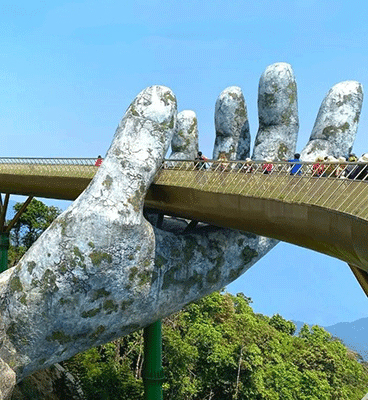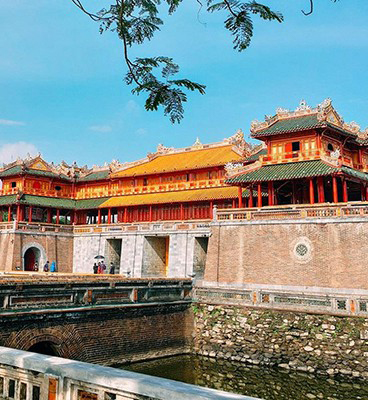Quan Cong Temple is also known as Ong Pagoda and it was founded back in 1653. It is a small temple that is dedicated to Quan Cong, who was a Chinese general that was loyal and sincere, while also portraying integrity and justice. This is one of the oldest temples in the region, which is why it makes its way onto many people’s itinerary.

The Quan Cong Temple is in the middle of Hoi An Ancient Town and it is one of the most prominent places to visit in the city. There are four buildings within this temple complex, and they are in the shape of the word “mouth” when it is written in Chinese. The written word basically looks like a rectangle. The annex building is in the front, then there are two side corridors, and the main building in the back. In the middle of them all is a courtyard.



When you walk up to the Quan Cong Temple, you will see that the entrance is covered in both red and gold, which makes everything look even more impressive. After stopping to catch your breath, and standing in awe, you will find yourself wandering through rows of houses and stopping at bright altars.

A statue of Quan Cong can be found on the central altar, which is in the back of the sanctuary inside the main building of the temple. The statue is made from paper mâché, which was placed on a wooden frame. It is common to see people make an offering to this statue, and when it happens, the caretaker strikes the nearby bronze bowl to make a noise that sounds like a bell.
At the left of Quan Cong’s statue is a statue of General Chau Xuong and Quan Binh, Quan Cong’s son, is to his right. It is necessary for everyone to remove their shoes prior to stepping onto the platform to honor Quan Cong.
Outside, there are Zen-like gardens and pathways to walk along. While you can simply wander along, you may want to stop for a few minutes to take it all in and do a little meditating.

There is an entrance fee for the Quan Cong Temple, but it must be paid when you purchase your Hoi An Ancient Town tickets. This is one of the twenty-two attractions that you can use your tickets for. Currently the Ancient Town ticket costs 120,000 VND for tourists and 80,000 VND for locals.
The Quan Cong Temple is open every day of the week from eight o’clock in the morning until five o’clock in the evening. However, the busiest days are Mondays, Tuesdays, and Fridays, and the first hour they are open on any day of the week. The Na ba Lo bus stop is the closest to the destination, so if you are staying further away, you can simply hop onto the bus and be here in no time at all! If not, it is extremely easy to walk here, and most people combine a visit to this temple with the rest of their time in Hoi An Ancient Town.
If you are looking for more temples to see around Hoi An during your visit, you may want to consider My Son Sanctuary, Cao Dai Temple, and Linh Ung – Bai But Pagoda. They are not all in Hoi An, but they are close enough that you can easily see them during a day trip out of the city.
The temples and pagodas are some of the best things to see while in Hoi An, and actually the entire country of Vietnam. If you have never been to a temple or pagoda before, a visit to any of these will truly open your eyes and your mind to what is possible.

After all, look at all that the Quan Cong Temple represents, and what the man, whom it is dedicated to, was like when he was alive. Not many people can say that they have lived in such a way and deserve to have a temple dedicated to them.
Once you have seen Quan Cong Temple, and maybe a couple of others, you can then see the rest of Hoi An Ancient Town. A few places that we recommend be put at the top of your list include the Sa Huynh Culture Museum, the Nguyen Tuong Family Chapel, the Trieu Chau Assembly Hall, and all the ancient tombs. You may also want to consider going to the Thanh Ha Pottery Village if you have the time.
There is so much to do and see in Hoi An, so make sure you have a plan and prioritize your days. That will ensure that you do not miss out on anything, including the Quan Cong Temple and the beauty that is everywhere inside.





